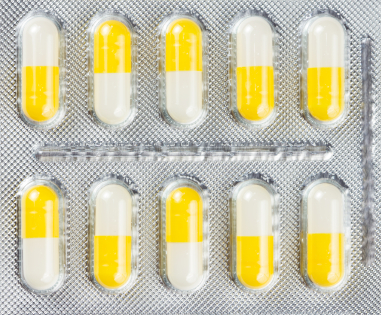codeine addiction

Dr Colin O'Gara is a consultant psychiatrist at Saint John of God Hospital, with responsibility for the addiction unit.
In our specialist addiction services for illicit and over-the-counter medication abuse we have certainly witnessed a substantial increase in presentations for codeine addiction.
The problem is a global one. In 2007, the International Narcotics Board (INB) noted that
'The abuse and trafficking of prescription drugs is set to exceed illicit drug abuse'. The INB also reported that over-the-counter preparations or prescription drugs were a drug of choice for many individuals and not abused as a substitute. In the US, prescription medicines are ranked as the second most misused class of drug after cannabis.
The full extent of codeine addiction in Ireland is unknown, but 2010 pharmacy statistics indicate that codeine-containing products were the bestsellers nationally. Codeine is available in Ireland over the counter (OTC) and by prescription. Doses of codeine vary according to the preparation - e.g. OTC Solpadeine contains 8mg of codeine whereas Solpadol (prescription) contains 30mg of codeine per tablet.
The vast majority of people will take codeine OTC or as prescribed for a limited period. Current recommendations in Ireland and the U.K. suggest that the drug should not be taken for more than 3 days. A minority however will take codeine in increasing amounts and as tolerance develops, become addicted. Addicted patients use repeat prescriptions or the internet to feed an addiction of up to 1000mg of codeine per day.
Another group of patients take codeine purely for the purposes of "recreation" - ingesting hundreds of milligrams of codeine in a binge. Consistent with other drugs of abuse, it is probably only 10pc of this group that go on to exhibit features of dependence with the 90pc moving on from the behaviour.
Specialist inpatient detoxification programmes usually offer a choice of options as patients requests will vary considerably around detoxifcation. The options are as follows:
1) No intervention: Some patients will request no intervention at all. Often these patients are under time constraints and view 'cold turkey' as the most time efficient option.
2) Sedatives: Benzodiazepines and sedative antipsychotic medication have long been used for detoxification from opioids. Both alleviate glutamate and adrenaline mediated overactivity of the central and peripheral nervous systems.
3) Lofexidine (Britoflex): An alpha adrenergic agonist which alleviates the noradrenergic surge associated with withdrawal.
4) Buprenorphine (Subutex): A partial mu-opioid agonist, has proven benefit in withdrawal, alleviating the acute symptoms. Not widely available yet in Ireland and cost within Ireland is potentially a problem. We commence patients who choose this option on 4mg per day, increasing to up to 16mg a day, then reducing over 5 days.
Most inpatient rehabilitation treatment programmes for codeine addiction last between one and three months and provide intensive therapy in groups and with individual therapists. When patients present to our service they will often have little previous input from counsellors and need to learn the basics of interacting in therapeutic groups or with individual counsellors.
Cognitive behavioural therapy provided on a 1:1 basis with the patient or in a small group aims to challenge the negative self defeating thoughts that maintain the addiction. In the case of codeine addiction, such thoughts might be "I cannot cope with this pain without Nurofen". Therapists would help patients to replace this thought with more helpful thoughts e.g. "I will cope with this pain by becoming more active and managing my stress better".